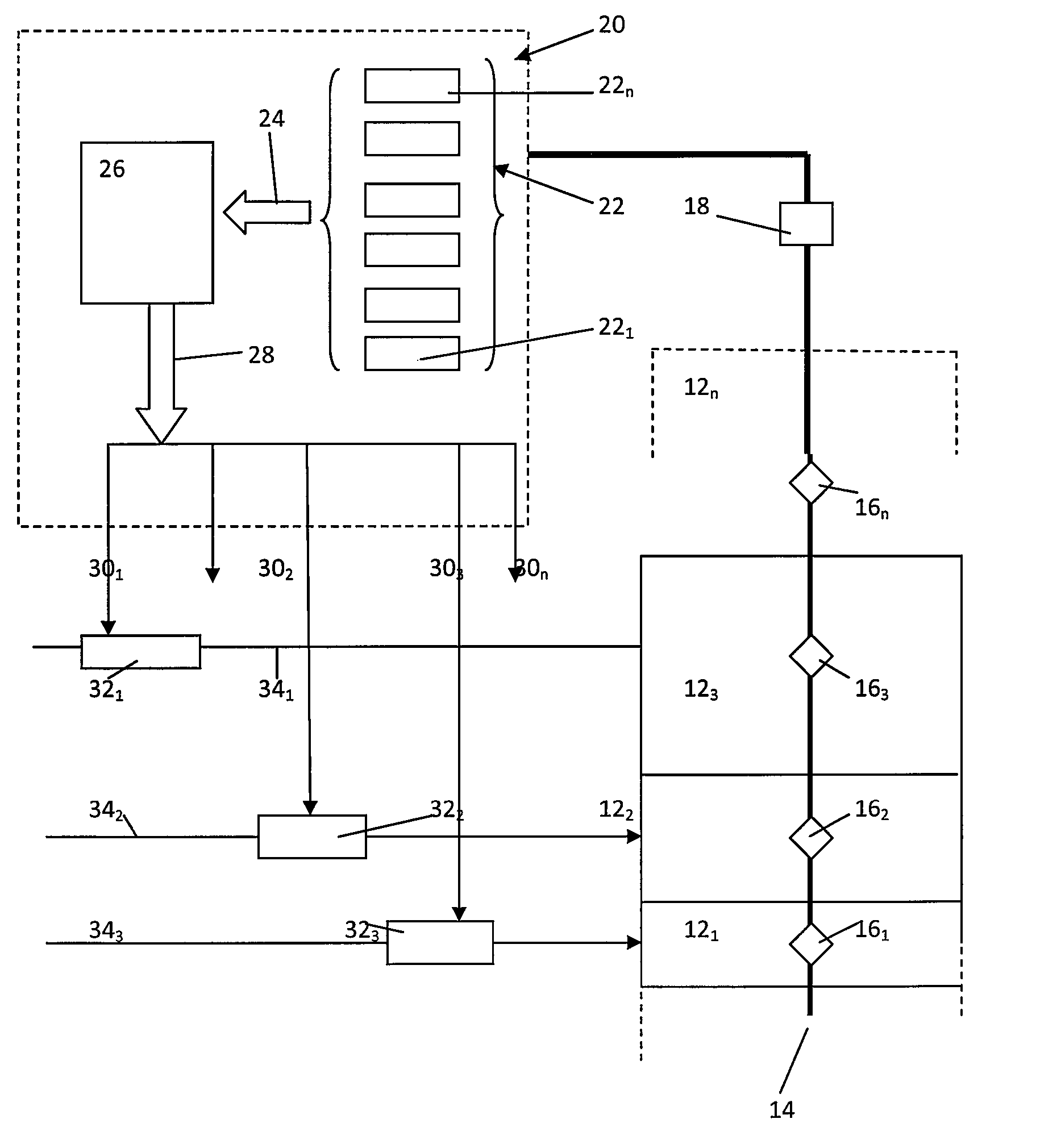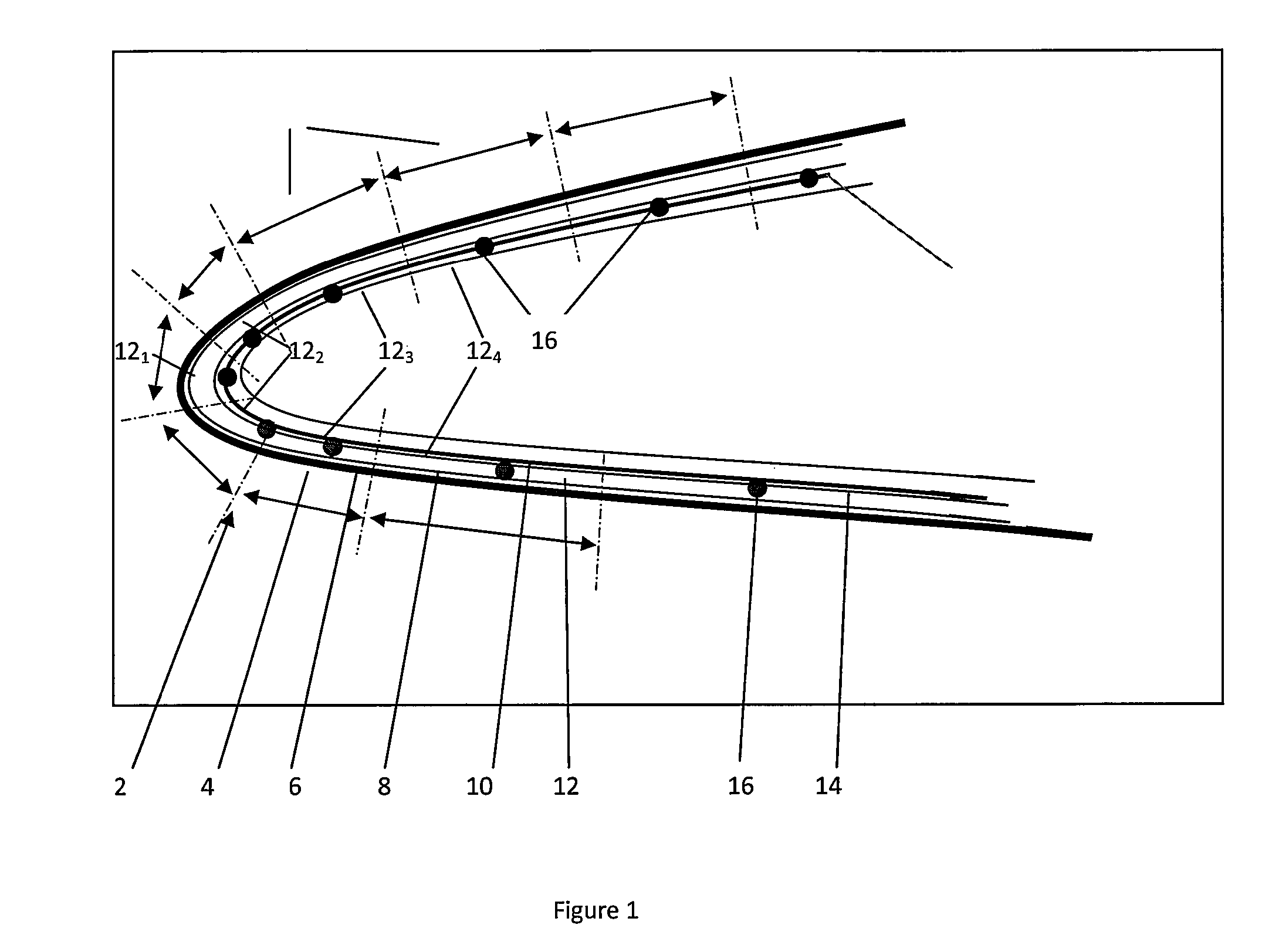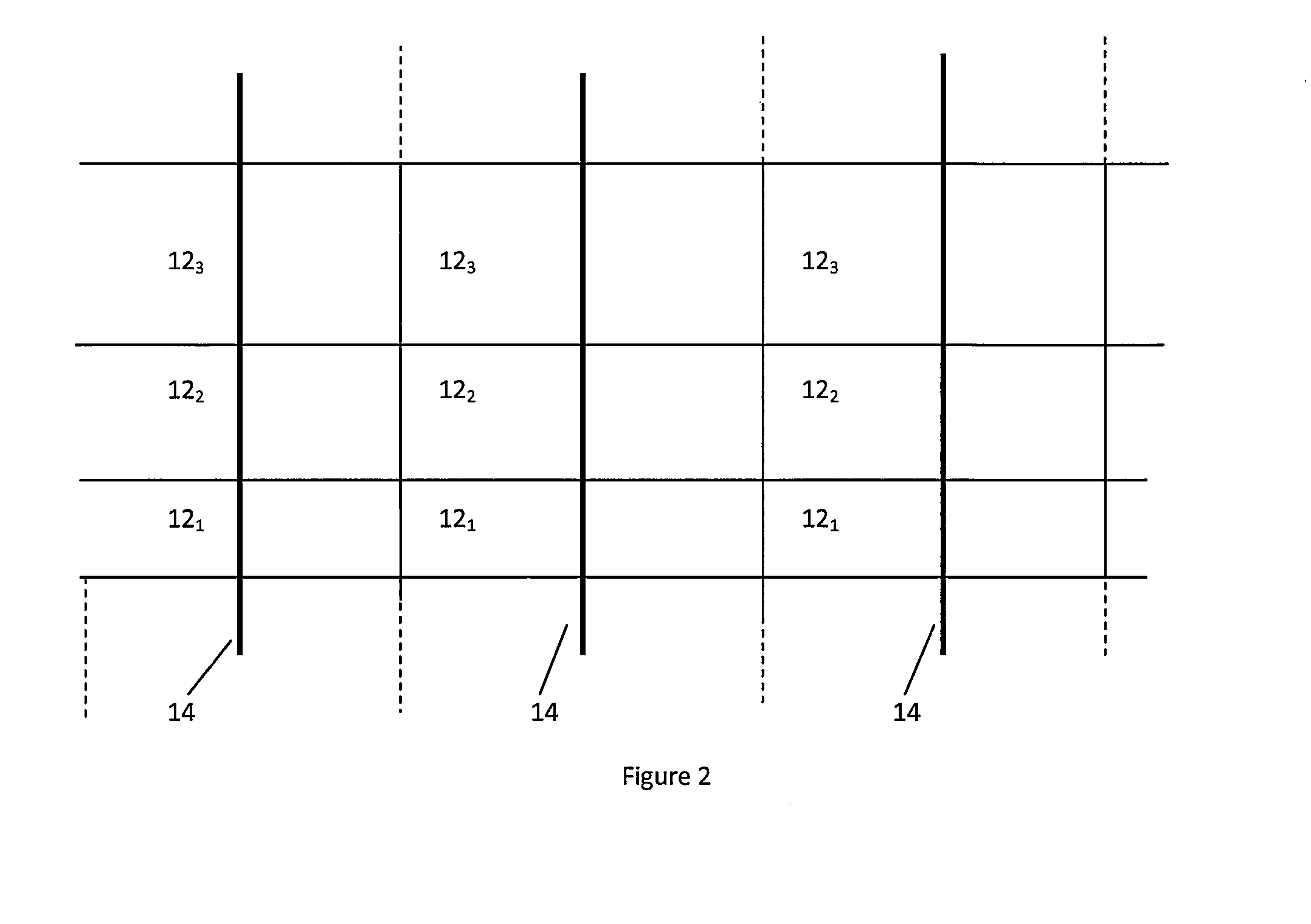Temperature monitoring
a technology of temperature monitoring and temperature, applied in the direction of instruments, de-icing equipment, transportation and packaging, etc., can solve the problems of compromising structural integrity, lack of robustness, and difficult lay-up and cure process
- Summary
- Abstract
- Description
- Claims
- Application Information
AI Technical Summary
Benefits of technology
Problems solved by technology
Method used
Image
Examples
Embodiment Construction
[0024]Referring first to FIG. 1, a leading edge slat 2 of an aircraft wing is defined by a contoured surface, which in this example is formed as an outer metallic erosion shield 4, inner layers 6, 10 of dielectric and structural composite material and a layer 8 of heater mats. The heater mats each extend a defined extent chord-wise, in a direction perpendicular to the length or span of the slat. Heater mats 121, 122, adjacent the leading edge, define what is known as a parting strip, where de-icing control is critical, and are smaller in width than heater mats 123, 124, etc., spaced from the leading edge. The width of each heater mat will be determined, inter alia, by the extent that de-icing considerations vary across the chord, and this will readily be determined by the person skilled in the art.
[0025]As shown diagrammatically in FIG. 2, a series of heater mats 121, 122, 123 etc., extend along the span or length of the slat, each mat having a predetermined length—as will be apprec...
PUM
 Login to View More
Login to View More Abstract
Description
Claims
Application Information
 Login to View More
Login to View More - R&D
- Intellectual Property
- Life Sciences
- Materials
- Tech Scout
- Unparalleled Data Quality
- Higher Quality Content
- 60% Fewer Hallucinations
Browse by: Latest US Patents, China's latest patents, Technical Efficacy Thesaurus, Application Domain, Technology Topic, Popular Technical Reports.
© 2025 PatSnap. All rights reserved.Legal|Privacy policy|Modern Slavery Act Transparency Statement|Sitemap|About US| Contact US: help@patsnap.com



